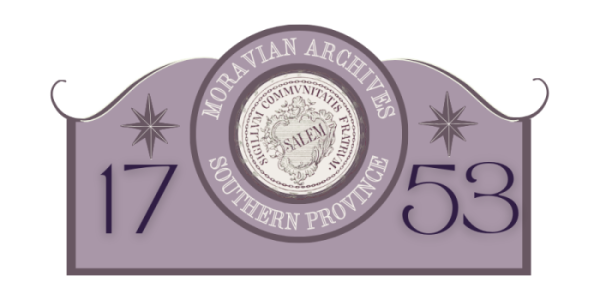Bethabara Moravian Church
The Southern Province began with Bethabara on November 17, 1753. The previous winter Bishop August Gottlieb Spangenberg found and surveyed 100,000 acres of land for the Moravian Church. He called this vast tract of wilderness “Wachovia.” In August 1753 the Church purchased Wachovia from John Carteret, the Earl of Granville, the last remaining Lord Proprietor of the Carolina colonies.
Now on that November 17 the first band of settlers arrived in Wachovia after their month-long journey from Pennsylvania. They found an abandoned hunter’s cabin, and here they made the beginning of the Moravian Church in North Carolina. That evening they held the first lovefeast in Wachovia. And wolves howled in the surrounding forest.
It is amazing what they and those who followed accomplished in the next couple of decades — a Brothers House, Gemein House, store, pottery, brewery, tavern, tannery. In the French and Indian War Bethabara was the most distant outpost of the English colonies on the western frontier, offering shelter to refugees. After the war, the colonial governor, William Tryon, visited, and tourists began flocking from as far away as Wilmington.
Then in 1772 the Moravian Church completed its plan to move Wachovia’s administration to a centrally located settlement called Salem, and at Bethabara the bottom fell out. A new Gemein House was constructed in 1788, but left with only half a congregation and the label “Unity farm,” Bethabara sank into obscurity, remembered only for a centennial or sesquicentennial or other ceremony recalling the early years of Wachovia.
But as the Province’s — and Bethabara’s — bicentennial approached, a fresh wind blew. An increase in membership called for new facilities to replace the 1788 Gemein House. A Christian education building was begun on Bethabara’s 199th anniversary, the cornerstone laid on its 200th, and the building dedicated on January 6, 1957. A new sanctuary, dedicated on January 16, 1972, completed the building project begun in the 1950’s.
Meanwhile, to preserve Bethabara’s past a joint city-county historic park was formed to excavate building sites, reconstruct the colonial stockade, and restore the 1788 Gemein House. Though welcoming this care for its past, the Bethabara congregation sees that further service lies in the future.
Moravian Archives, 2002
